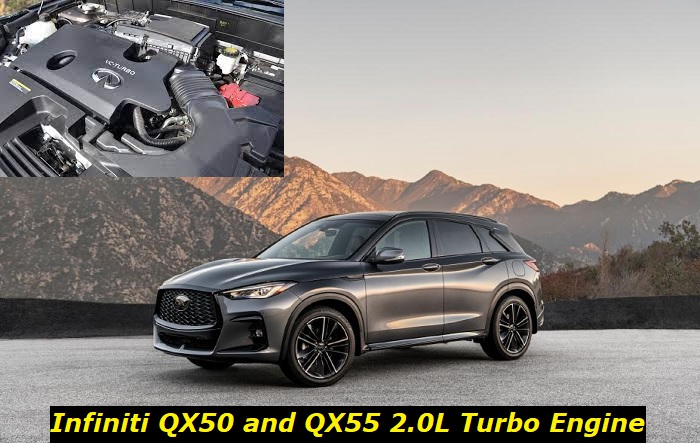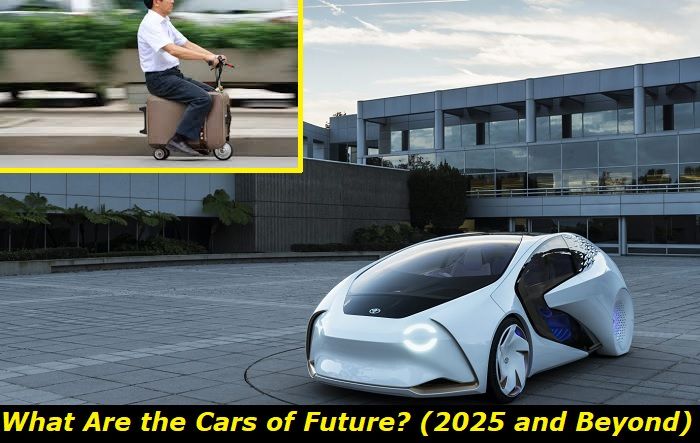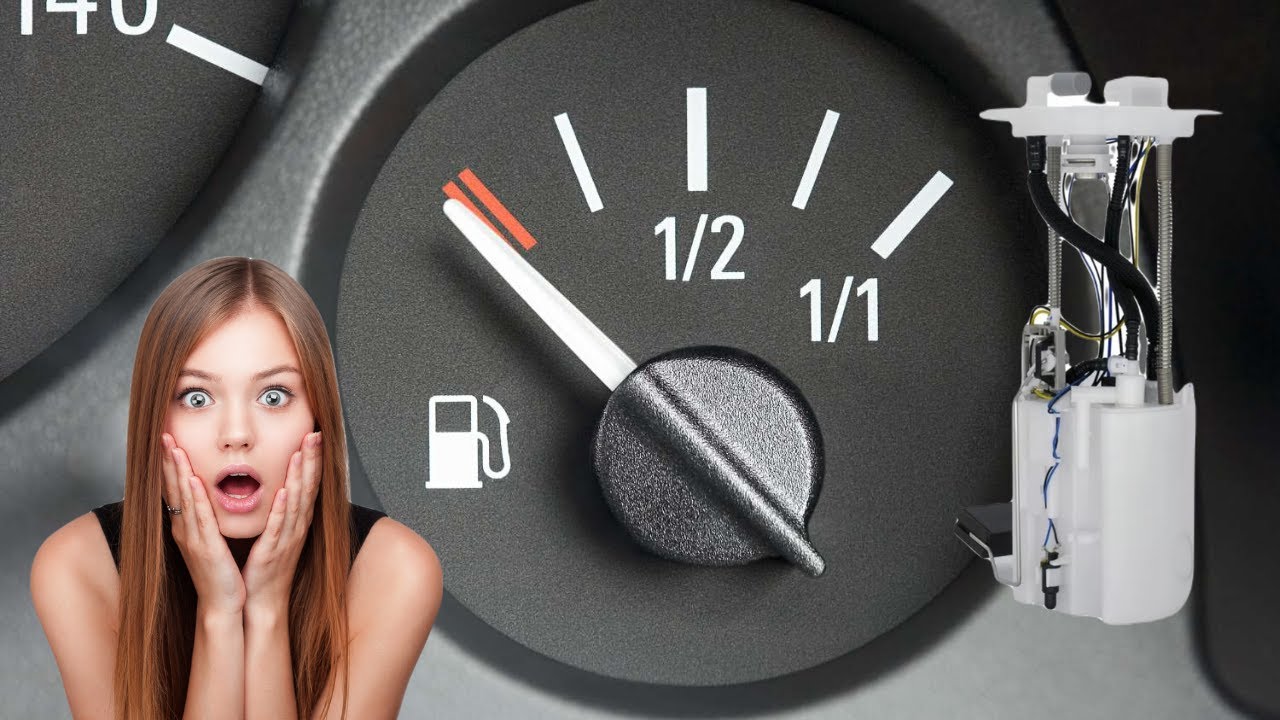The Infiniti QX50 and the derived coupe version QX55 are hard to call a complete success on the market. With average sales of about 15,000 units per year in the US, these luxury SUVs can't compete with their traditional counterparts. But I also can't say that American drivers don't like these vehicles.
Today, I'm going to tell you more about the Infiniti QX50 and QX55 2.0L VC-Turbo engine codenamed KR20DDET and explain its specs and durability. I will cover some technical features that may be considered to be potential problems and will also tell you what you should be warned about if you bought or are going to buy this vehicle.

Here's what I'm going to talk about:
- Key features of the Infiniti QX50 2.0L Turbo engine.
- How long will this engine survive in your QX50?
- What are the most common problems with these engines?
- What should you know and do to prolong its life?
Let's get started!
Key features of the VC-Turbo engine in the Infiniti QX50 and QX55
When you are looking at the gorgeous QX50, you immediately think that there is some good V6 made by Nissan under the hood of this car. But you may be frustrated to know that there is a turbocharged 2-liter engine from the Nissan DR engine family. Yes, it still goes well, accelerates like lightning, and moves wonderfully on highways. But only 2 liters seem like too little displacement for such a car.
These first emotions vanish when you start driving. The QX50 drives really well with this engine under the hood. So, let's see in detail what Nissan did with a simple 2-liter engine to achieve this high-quality driving.
Here are some facts:
- this is the DR20DDET engine with 4 cylinders, 2 liters of displacement, and a big turbocharger, the engine is called VC Turbo;
- the same engine powers the Altima and the Chinese version of the QX60 in addition to the QX50 and QX55 models;
- the engine offers decent power of 268 hp and also a torque of 280 lb-ft;
- it's equipped by the CVT and also it comes only with AWD, so in terms of transmission, you will not have any choice;
- the injection in this engine is combined and this should protect it from developing all kinds of buildups on valves;
- the main feature is the system of variable compression ratio - the first such system in the world of ICE engines;
- of course, it has phasers on both camshafts to improve efficiency, also the engine is equipped with a timing chain;
- the powerplant is not really too economical and offers 22 MPG in the city and about 28 MPG on highways.
The new QX50 will go from zero to 60 MPH in 5.4 seconds which is a great result for an SUV. Its acceleration is very smooth and comfortable thanks to the CVT. Also, the vehicle feels very active and fresh in comparison with the previous V6 engines in the previous generation of the QX50 model.
For now, I can't say anything bad about the VC Turbo in the QX50 and QX55. But given it has so many new technologies, it should have some common issues and I'm going to dig them up to tell you about them later in this article. Now, let's see if this is a durable engine choice for Infiniti owners.
How many miles will the 2.0L Turbo live in the QX50?
Although I don't have any stats about the high-mileage engines of this model yet, I can predict that it will go up to 150,000 miles, on average, and then will need very expensive repairs or even replacement.
When Nissan gets 140 lb-ft of torque from one liter of engine displacement, such an engine is not going to last very long. The manufacturer chose to hunt for performance and used unseen technologies of variable compression ratio making this engine quite hard to repair and even maintain correctly.
I can even imagine the puzzled face of an Infiniti dealership mechanic when the scanner shows the problem with the variable compression system and they just don't know what to do with that recommending the engine replacement.
Given the huge power-from-liter ratio and new technologies in this engine, I wouldn't rely on it for more than 150,000 miles. But if you maintain it correctly and never abuse it, you may expect more than that. I'm just talking about average lifespan and I'm sure that some owners will lose this engine at about 100K miles due to some common problems described later in this article.
What are the common issues with the Infiniti QX50 2.0L VC-Turbo engine?
So, the KR20DDET engine seems like a not-bad try for Nissan to keep using the ICE engine without hybrid technologies and still make them eco-friendly. It's a powerful and good-to-drive engine but it certainly has some questions from me in terms of its longevity. Some common problems will appear after you drive 50,000 miles and here you should remember that the warranty coverage is 4 years of 60K miles in the US.
Here are the problems you may face with this engine:
1. Start-stop system failure
A very surprising fact was revealed when researching the problems of this engine. It appears to have a faulty start-stop system and it can just stall at the intersection or at the traffic light and refuse to start again. This may lead to issues and accidents on the road.
Of course, I recommend deactivating the start-stop system once you buy this vehicle. This is an important step to improve the safety of your driving and to avoid common issues that can happen with the engine if it stalls now and then.
2. Timing chain issues
Although I haven't found any reports about timing chain failures yet, I'm pretty sure they will appear a little later when these engines get some decent mileage on them. The VC-Turbo engine has quite a thin chain and it's going to stretch at about 80,000 miles or even sooner, depending on the driving style.
Once the chain is stretched and the tensioner can't help anymore, you will hear rattling. This is a clear sign that the engine should be repaired immediately. Chain replacement will cost you a fortune but you better plan it at 100,000 miles or earlier if you want to avoid complete engine failure.
3. CVT issues and failure
Although this CVT type is more reliable than some other CVTs used in Nissan cars, it still will fail earlier than you think. I believe, 100,000 miles is the maximum that you can get. When the CVT fails, you will need to repair or replace it to keep driving your QX50 SUV.
The worst thing is the price of repair or replacement. If I owned the QX50 or the QX55, I would sell it before it reaches 100K miles to avoid problems with the CVT. If it fails, you will just have no other choice but to invest huge money in your car.
4. Variable compression potential problems
Of course, new engines don't show any issues and I don't think problems will show up before the engine hits 120-140 thousand miles. After that, everything is possible. I will not make a wild guess on what exactly may happen with this system because this is the world's first system of variable compression. But I'm pretty sure it won't live longer than other parts of the engine and will cause some leaks or will stuck and make the engine work harshly.
5. Valve adjustment problems
At 50,000 miles, you may notice that the engine is not as smooth and efficient as before. If you still have the warranty coverage by Infiniti, you will just go to the dealership and they will fix this by adjusting the valves. It appears to be that with all those super-modern technologies, these engines don't have hydraulic lifters or some other solutions for automatic valve adjustment. So, every 50,000 miles, you will need to pay for this procedure in the Infiniti dealership.
How can you prolong the life of the VC-Turbo engine in the QX50?
Prolonging the life of this engine is quite a difficult task because no one can tell you for sure what exactly will happen with it at 100,000 or 150,000 miles. No stats, no ways someone can predict this and tell you what to do.
But here are some important guidelines that will anyway help you use the 2.0L Turbo engine in the QX50 and QX55 SUVs:
- regular oil and filter changes are extremely important, never miss this;
- only OEM parts and fluids are recommended;
- replace the timing chain at 80,000 miles and then at 150K miles if the engine is still OK;
- have the valves adjusted every 50,000 miles or so;
- avoid abusing your engine, you may drive aggressively, but keep within rational borders;
- use all recommendations that may prolong the life of your CVT;
- don't ignore such symptoms as warning lights, loss of power, harsh work, etc.
It's important to have this engine maintained and repaired by professionals. Even Infiniti dealership workers will sometimes have a hard time diagnosing and repairing this engine, so trying to save money and going to a repair shop near you may have a negative effect on the engine.
About the authors
The CarAraC research team is composed of seasoned auto mechanics and automotive industry professionals, including individuals with advanced degrees and certifications in their field. Our team members boast prestigious credentials, reflecting their extensive knowledge and skills. These qualifications include: IMI: Institute of the Motor Industry, ASE-Certified Master Automobile Technicians; Coventry University, Graduate of MA in Automotive Journalism; Politecnico di Torino, Italy, MS Automotive Engineering; Ss. Cyril and Methodius University in Skopje, Mechanical University in Skopje; TOC Automotive College; DHA Suffa University, Department of Mechanical Engineering






Add comment